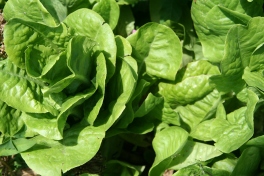Hardy Hibiscus for the Midwest
It’s hard to believe – a tropical-looking hibiscus with plate-size flowers is hardy for Midwest gardens! In fact, the showy flowers are now in bloom in area gardens. Heartland Gardening recently talked with Linda Johnson, co-owner of Scioto Gardens (a must-visit nursery and specialty plant supplier in Delaware, Ohio) about these crowd pleasers.
She recommends this group of perennials for great, mid- to late-summer WOW! She says the super-sized flowers come in a range of colors from pure white to pink to bright red. Plus, they’re deer resistant and tolerate wet soils. Even though some Hibiscus are tropical, there are many cultivars that are cold hardy in the Midwest. Two species are even native to Ohio.
Linda says the plants range in size from three to six feet tall. Most have green leaves, but some have purple or reddish foliage. They grow best in full sun with average to wet soil. The stems are somewhat woody and can be cut back in the fall after the plant is dormant. Linda suggests leaving a four- to six-inch stem to mark the late emerging plant’s location. Check out her favorites:
- ‘Robert Fleming’ is a dwarf Hibiscus getting only three feet tall. The buds emerge dark purple and then open into a deep, rich red. Known for its striking flower, this cultivar is named after one of the Fleming Brothers who were famous for their hybridizing of Hibiscus plants.
- ‘Kopper King’ has coppery-colored foliage that’s quite attractive throughout the season. The flowers are light pink with a dark pink center. The plants grow three to four feet.
- ‘Plum Crazy’ Flowers are rose-purple with darker purple veining and a very dark purple central eye.
Foliage is deeply dissected, purplish green and the plants grow about three to four feet.
- Hibiscus moscheutos is one of the species native to Ohio. It usually has flowers that are white with a dark pink center, but sometimes the flowers are pink. The flowers are conical and a bit smaller than the wide-open dinner plate flowers of the cultivars. It is typically found in marshy areas. The plants can grow three- to six-feet tall, depending on moisture and soil fertility.

















